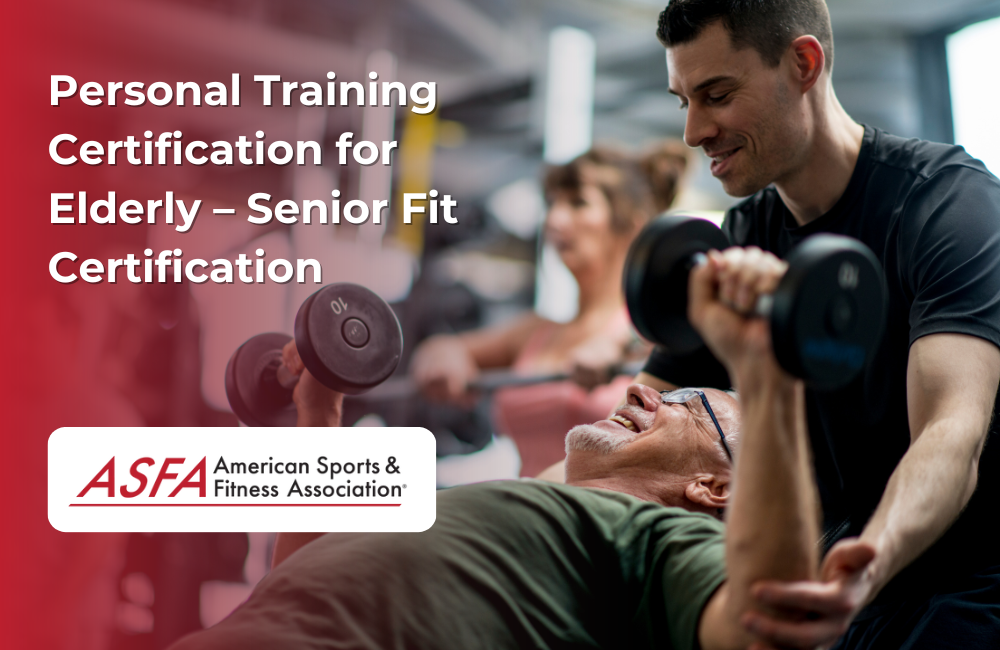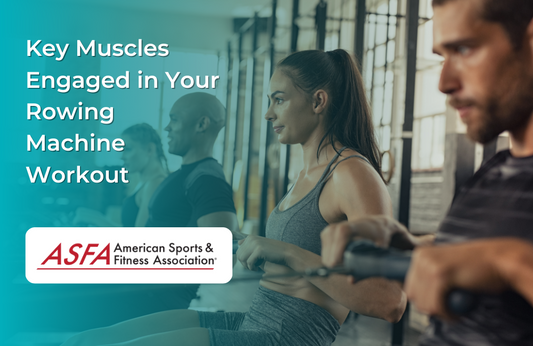Fitness training for seniors plays a crucial role in promoting wellness, health, and independence among the aging population. As individuals grow older, they face unique challenges, including an increased risk of injury, balance issues, and joint health concerns. Incorporating fitness into their daily routines can help mitigate these risks, but it’s essential for seniors to approach exercise with caution and guidance. Personal trainers with a senior fitness certification can provide the necessary support and expertise to help seniors improve their strength, stability, flexibility, and overall quality of life.
The Importance of Fitness for Seniors
As people age, physical activity becomes increasingly important for maintaining health and well-being. Regular exercise not only helps improve physical function but also boosts mental health and emotional resilience. However, older adult clients must approach fitness differently than younger individuals due to various factors such as age-related health conditions, medications, and an increased risk of injury.
Key Benefits of Fitness for Seniors:
-
Improved Stability and Balance: Falls are one of the leading causes of injury among seniors. Engaging in fitness activities that enhance balance and stability can significantly reduce the risk of falling.
-
Increased Flexibility: Stretching and flexibility exercises help maintain joint mobility and reduce stiffness, which is particularly beneficial for seniors dealing with arthritis or other joint issues.
-
Functional Fitness: Focusing on functional fitness ensures that seniors can perform daily tasks like bending, lifting, sitting, and reaching more easily. This improves their independence and quality of life.
-
Enhanced Mental Health: Exercise releases endorphins, which improve mood and reduce stress. Regular physical activity can help seniors combat anxiety, depression, and cognitive decline.
-
Better Cardiovascular Health: Physical activity strengthens the heart and improves circulation, reducing the risk of heart disease and high blood pressure.
By incorporating regular exercise into their lives, seniors can enjoy a healthier, more active lifestyle and maintain their independence for longer.
Understanding the Unique Challenges Seniors Face with Chronic Health Conditions
Seniors often have to navigate a range of health issues and physical limitations that can complicate their ability to engage in regular exercise. These challenges may include balance disorders, arthritis, cardiovascular conditions, and the side effects of medications. It’s important to consider these factors when designing a fitness program for older adults to ensure their safety and success. A personal trainer can play a crucial role in creating tailored fitness programs that address these specific needs, enhancing the health and fitness outcomes for seniors.
Common Challenges Seniors Face:
-
Balance and Mobility Issues: As people age, their sense of balance often deteriorates, increasing the risk of falls and injuries. A fitness program that includes balance training can help improve stability and coordination.
-
Joint Pain and Arthritis: Many seniors suffer from joint pain and arthritis, making high-impact exercises uncomfortable or even harmful. Low-impact exercises are essential for protecting joints while still building strength.
-
Medications: Seniors may be taking medications that affect their energy levels, coordination, or heart rate. Fitness professionals need to be aware of these potential side effects when creating exercise plans.
-
Frustration and Limitations: Many seniors feel frustrated when they are no longer able to perform tasks that were once easy. Personal trainers must provide encouragement and focus on achievable goals to help seniors regain confidence in their physical abilities.
Personal trainers who specialize in senior fitness can help older adults overcome these challenges by tailoring programs to their specific needs and limitations.
Becoming a Certified Senior Fitness Instructor
Becoming a certified senior fitness instructor is a rewarding journey that equips you with the skills and knowledge to make a significant impact on the lives of older adults. Here’s a step-by-step guide to help you navigate the certification process and meet the key requirements:
Steps to Certification and Key Requirements:
-
Meet the Basic Requirements: Most certification programs require candidates to have a high school diploma or equivalent. Some programs may also prefer or require a degree in a related field, such as exercise science or kinesiology, to ensure a solid foundation in fitness principles.
-
Complete a Certification Program: Enroll in a certification program specifically designed for senior fitness. These programs cover essential topics such as functional fitness, balance training, and health considerations for older adults.
-
Gain Experience: Practical experience is invaluable. Many certification programs recommend or require hands-on experience working with older adults. This can be achieved through volunteering or interning at fitness centers, senior living facilities, or rehabilitation centers. Real-world experience helps you understand the unique needs and challenges of senior clients.
-
Pass a Certification Exam: To demonstrate your knowledge and understanding of senior fitness principles, you’ll need to pass a written exam. This exam typically covers topics such as exercise physiology, program design, and safety considerations for older adults.
-
Maintain Certification: Staying current with industry developments and best practices is crucial. Most certification programs require continuing education credits to maintain your certification. This ensures that you remain knowledgeable about the latest research and techniques in senior fitness.
Key requirements for certification may include:
-
Age: Some certification programs may have age requirements, such as being at least 18 years old.
-
Education: A degree in a related field may be required or recommended.
-
Experience: Gaining experience working with older adults may be required or recommended.
-
Background Check: Some certification programs may require a background check to ensure the safety and well-being of senior clients.
By following these steps and meeting the key requirements, you can become a certified senior fitness instructor and embark on a fulfilling career helping older adults achieve their fitness goals.
The Role of Senior Fitness Certification for Personal Trainers
For personal trainers interested in working with older adults, obtaining a senior fitness certification is essential to design structured training programs. This specialized certification equips trainers with the knowledge and skills needed to safely and effectively train seniors, taking into account their unique physical and health-related needs.
What You Learn in Senior Fitness Certification:
-
Functional Fitness for Seniors: Trainers learn how to design programs that focus on improving seniors' ability to perform everyday activities, such as standing from a seated position, bending over, or reaching for objects.
-
Balance and Stability Training: Seniors are at a higher risk of falls, so trainers must know how to incorporate exercises that strengthen the core and improve balance to reduce the risk of injury.
-
Joint Health and Low-Impact Exercise: Trainers learn how to select and modify exercises that are gentle on the joints while still providing the benefits of strength training. This includes activities like walking, swimming, and water aerobics.
-
Health Considerations for Older Adults: Senior fitness certification teaches trainers how to assess the specific health concerns of seniors, including how medications and chronic conditions might affect their ability to exercise.
-
Safety and Injury Prevention: Trainers learn how to monitor seniors during exercise to prevent injuries, ensure proper form, and make necessary modifications to accommodate any physical limitations.
The Importance of Functional Fitness for Seniors
One of the primary focuses of senior fitness is functional fitness. Functional fitness refers to exercises that improve the ability to perform daily activities, such as bending, lifting, sitting, and reaching. For seniors, maintaining functional fitness is key to staying independent and reducing the risk of injury during everyday tasks.
How Functional Fitness Helps Seniors:
-
Improves Core Strength: A strong core is essential for balance and stability, helping seniors avoid falls and injuries.
-
Increases Flexibility and Mobility: Flexibility exercises allow seniors to maintain a greater range of motion, making it easier to perform daily tasks like getting dressed or reaching for items on high shelves.
-
Enhances Independence: Seniors who focus on functional fitness are better able to take care of themselves without assistance, improving their overall quality of life.
-
Reduces Fall Risk: By improving strength, balance, and coordination, functional fitness significantly reduces the risk of falls, which is one of the leading causes of injury in older adults.
Trainers certified in senior fitness are equipped to help older adults build functional strength safely, allowing them to stay active and independent for longer.
Low-Impact Exercises for Joint Health and Mobility
Low-impact exercises are particularly beneficial for seniors, as they minimize the risk of injury while still improving strength, flexibility, and cardiovascular health. These exercises are gentle on the joints, making them ideal for seniors dealing with arthritis or other joint issues.
Recommended Low-Impact Exercises for Seniors:
-
Walking: Walking is a simple, low-impact exercise that improves cardiovascular health, strengthens leg muscles, and enhances joint mobility. It's easy to adjust the intensity based on the individual's fitness level.
-
Swimming and Aquatic Fitness: Water exercises provide resistance without putting strain on the joints, making swimming an excellent full-body workout for seniors. Aquatic fitness can also help improve joint mobility and reduce pain for those with arthritis.
-
Chair Yoga: Chair yoga is a gentle form of exercise that allows seniors to stretch and improve flexibility while seated, making it accessible for those with limited mobility.
-
Resistance Band Exercises: Resistance bands provide gentle strength training without the need for heavy weights, which can be hard on aging joints. These exercises can be easily modified to suit different fitness levels.
By incorporating low-impact exercises into a senior fitness program, personal trainers can help older adults build strength and endurance while protecting their joints.
Safety Considerations for Seniors
Ensuring safe exercise practices is paramount when working with senior clients. Older adults often have unique health risks and physical limitations that require careful consideration. Here are some essential safety considerations to keep in mind:
Ensuring Safe Exercise Practices:
-
Assess Health Risks: Before starting any fitness program, assess your clients’ health risks and medical conditions. This includes understanding chronic health conditions, medications, and mobility limitations. A thorough assessment helps you design a safe and effective exercise plan tailored to each individual’s needs.
-
Modify Exercises: It’s crucial to modify exercises to accommodate your clients’ physical limitations and health conditions. For example, if a client has arthritis, opt for low-impact exercises that are gentle on the joints. Always prioritize exercises that can be safely performed without exacerbating existing health issues.
-
Use Proper Equipment: Using the right equipment can significantly enhance safety. For clients with balance issues, incorporating walkers or canes can provide additional support. Ensure that all equipment is in good condition and suitable for the exercises being performed.
-
Monitor Progress: Regularly monitor your clients’ progress and adjust exercise programs as needed. Pay attention to any signs of discomfort or fatigue, and be prepared to modify the intensity or type of exercise accordingly. Continuous monitoring helps prevent injuries and ensures that clients are progressing at a safe and appropriate pace.
-
Provide Clear Instructions: Clear communication is key to ensuring that clients understand how to perform exercises safely. Provide detailed instructions and demonstrations, and encourage clients to ask questions if they are unsure about any aspect of the exercise.
Additional safety considerations may include:
-
Emergency Procedures: Establish and communicate emergency procedures, such as having a first aid kit on hand and knowing CPR. Being prepared for emergencies can make a critical difference in ensuring client safety.
-
Client Communication: Maintain open and honest communication with your clients about their health and fitness goals. Listen to their concerns and feedback, and adjust programs as needed to meet their needs.
-
Environmental Factors: Consider environmental factors, such as lighting and temperature, to create a safe and comfortable exercise environment. Ensure that the exercise area is free of hazards and well-suited to the activities being performed.
By prioritizing safety and taking these considerations into account, you can help your senior clients exercise confidently and effectively, reducing the risk of injury and promoting long-term health and well-being.
The Importance of CPR and First Aid Training for Senior Fitness Trainers
In addition to senior fitness certification, it's crucial for personal trainers working with older adults to be certified in CPR and First Aid. Seniors are at a higher risk of medical emergencies, such as heart attacks or falls, and trainers must be prepared to respond quickly and effectively in these situations.
Why CPR and First Aid Training is Essential:
-
Medical Emergencies: Older adults are more susceptible to heart-related issues, and having CPR training ensures that you can respond in the critical moments before medical help arrives.
-
Fall Response: If a senior falls during a session, knowing how to administer first aid and safely assess the situation is vital to preventing further injury.
-
Client Safety: CPR and First Aid training show clients and their families that you are fully prepared to handle emergencies, building trust and confidence in your services.
Career Opportunities and Benefits
A career as a certified senior fitness instructor offers a wealth of opportunities and benefits. Whether you’re passionate about helping older adults stay active or looking for a fulfilling and flexible career, specializing in senior fitness can be incredibly rewarding. Here are some career paths and advantages to consider:
Exploring Career Paths and Advantages:
-
Job Opportunities: Certified senior fitness instructors are in demand across various settings. You can find job opportunities at fitness centers, senior living facilities, hospitals, and rehabilitation centers. Each setting offers unique experiences and the chance to work with diverse populations of older adults.
-
Career Advancement: Specializing in senior fitness opens doors to career advancement opportunities. You can further specialize in areas such as cardiovascular health or training seniors with chronic health conditions. Advanced certifications and continuing education can enhance your expertise and make you a sought-after professional in the field.
-
Personal Satisfaction: Working with older adults can be deeply satisfying. You’ll have the opportunity to help seniors achieve their health and fitness goals, improve their quality of life, and maintain their independence. The positive impact you make on their lives can be incredibly rewarding and fulfilling.
-
Flexibility: Many certification programs offer flexible scheduling, allowing you to work at your own pace and choose your own clients. This flexibility can be particularly appealing if you’re looking to balance work with other commitments or pursue a part-time career in senior fitness.
-
Competitive Salary: Certified senior fitness instructors can earn a
Conclusion: Specializing in Senior Fitness for a Fulfilling Career
Senior fitness is an increasingly important area in personal training, as more seniors seek to maintain their health, independence, and quality of life through exercise. By obtaining a senior fitness certification, along with CPR and First Aid training, personal trainers can equip themselves with the knowledge and skills needed to help seniors safely improve their fitness levels.
Whether it's through low-impact exercises like walking and swimming or focusing on functional fitness to enhance daily living, trainers certified in senior fitness can make a lasting impact on the lives of older adults. Specializing in this field not only allows you to help seniors stay active and independent but also opens up new career opportunities in the growing senior fitness market.
Get started today with ASFA's Senior Fitness Certification to begin a rewarding career helping seniors achieve their fitness goals!





